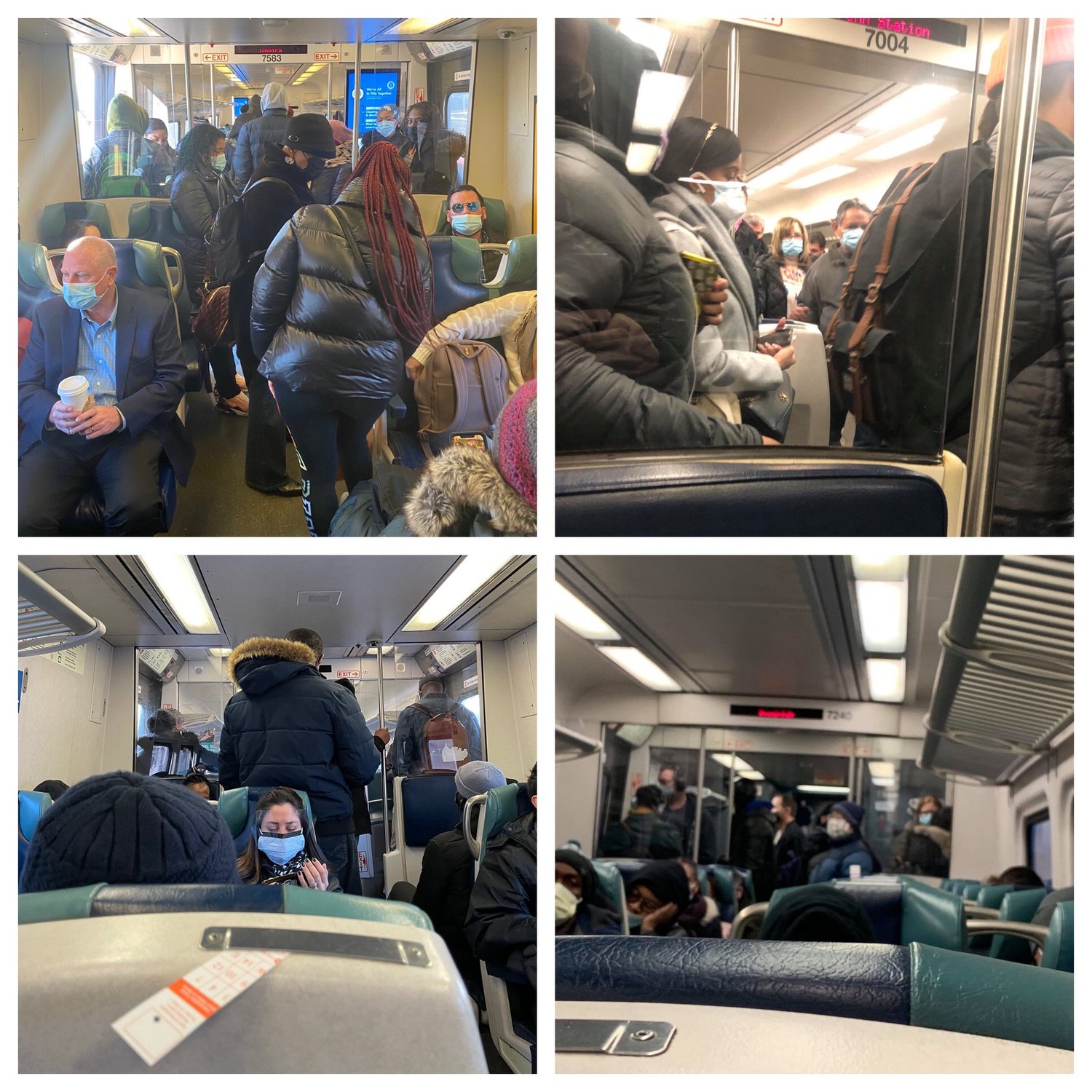LIRR schedule change brings woes to Valley Stream riders
Faced with plummeting ridership amid the coronavirus pandemic and a budget gap of $2.5 billion, in December the Metropolitan Transportation Authority announced that on March 8, LIRR service would be reduced 25 percent.
But with fewer trains during morning rush hours, reports of crowded conditions within cars preventing proper social distancing became widespread. The backlash from riders and lawmakers was swift.
Valley Streamer Josh Stein, who works as a healthcare attorney in Manhattan, takes the train daily between 8 and 9 a.m. While not packed, Stein said once the schedule change took effect, his morning train cars were full to the degree that keeping six feet of distance between riders had become impossible.
“Not every single seat is filled,” he said, “but it’s certainly nothing that would meet social distancing requirements.”
It was a far cry from mornings during the summer, Stein recalled, when he would sometimes get a car all to himself. Over time, riders gradually came back, and he would see maybe one or two people to a row of seats per car. But with the schedule change the shift was dramatic.
In addition to the potential danger of a crowded train while the threat of coronavirus transmission remains, Stein said the cuts posed an issue of convenience. Before, he could catch any one of four trains out of Valley Stream when he headed to work around 8 a.m. Now, if he misses the 8:10 a.m. train, the next comes at 8:43 a.m., with the potential for him to be late to work.
“People basically have one train to get there on time,” he said.
Others took to social media to voice their concerns. Shelby Charnoff took photos of the crowded conditions on her train out of Valley Stream and posted them to Twitter. “Is this what social distancing looks like to you?” she tweeted at the LIRR.
Patrick Barnable also posted on Twitter the day the new schedule went into effect that his 7:23 a.m. train from Long Beach had been packed by the time it reached Valley Stream, with riders standing in the doorways. “Cutting service from three to one per hour during rush hour is ridiculous,” he said.
In a statement on March 8, LIRR President Philip Eng said incidents of overcrowding were “sporadic” and “isolated.” He also noted that $6.5 billion in aid incoming from the recently passed federal stimulus law would be unlikely to affect the revised “rightsizing” schedule change.
By the next day, however, his agency had already reversed course, announcing that starting March 29, the service cuts would be restored. “We heard our customers’ about our new schedule loud and clear,” Eng said.
State Sen. Todd Kaminsky, who sits on the Senate Transportation Committee, praised the reversal. “This victory for riders happened because we worked together to make our voices heard,” he said in a statement.
Still, with a week out from when the original schedule is slated to come back, Stein questioned why it’s taken to long to reverse course.
“I’m not sure why a reversal back to the original schedule just one day after the original change took place takes three weeks to implement,” he said.

 39.0°,
Fair
39.0°,
Fair 




